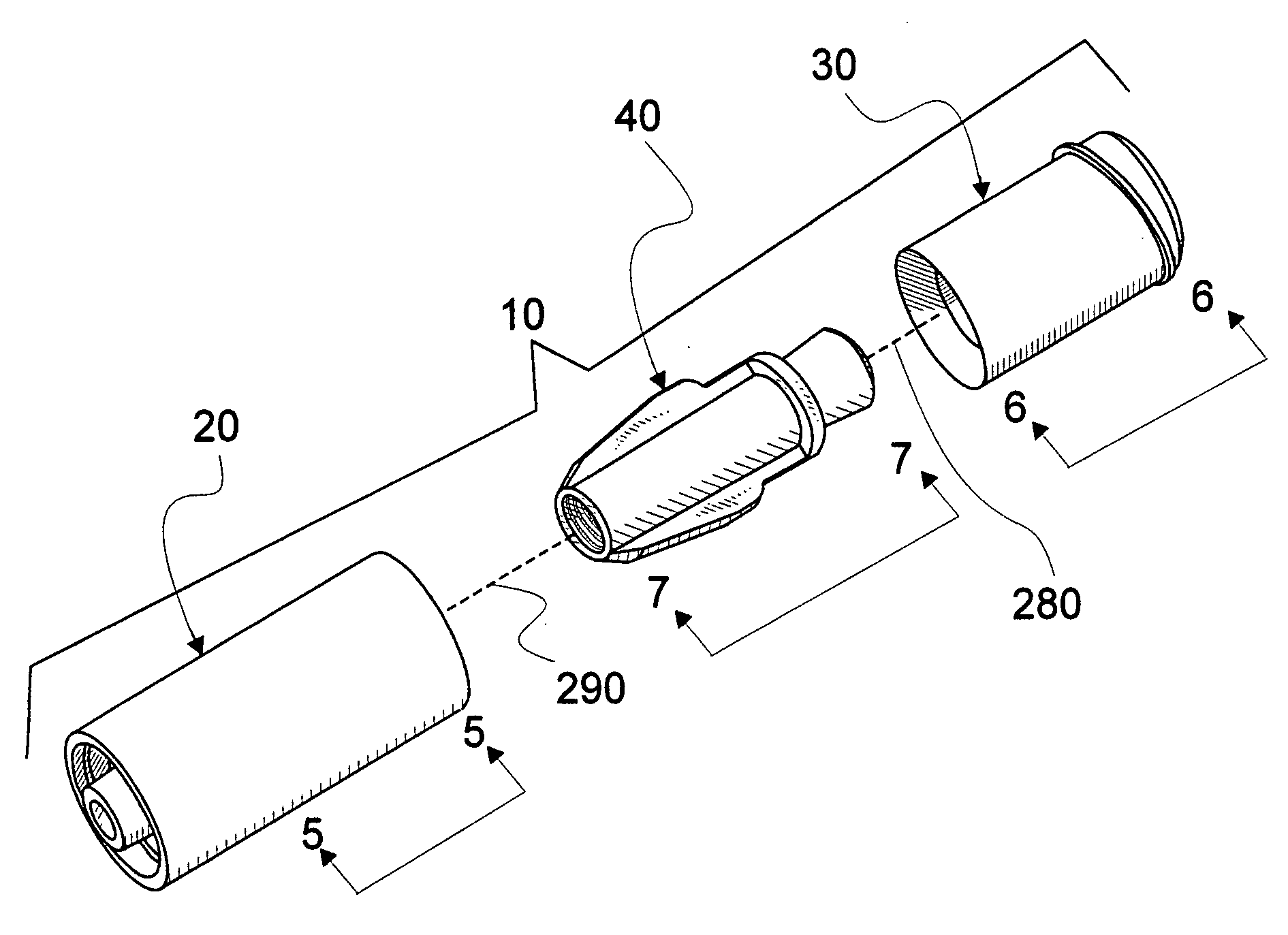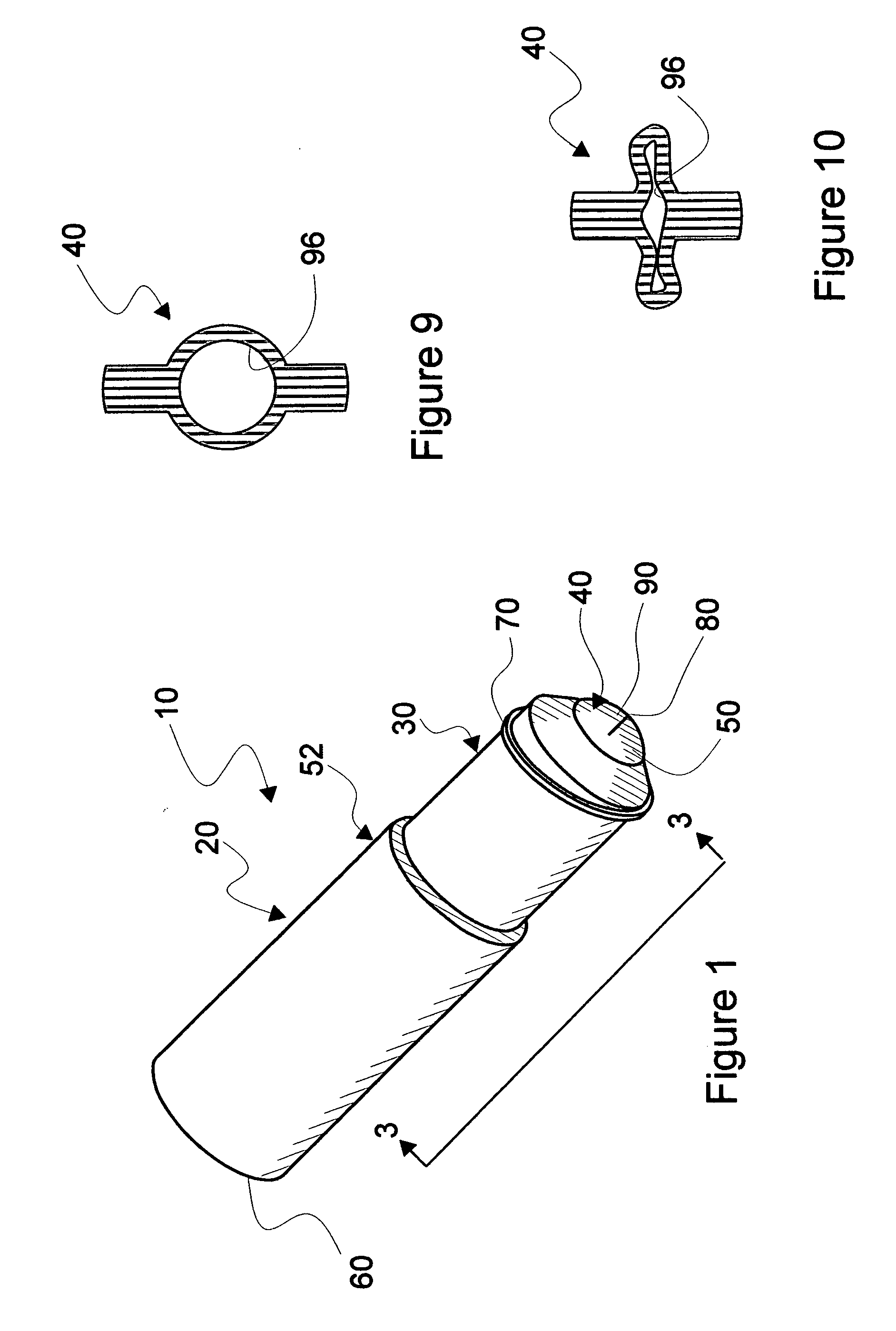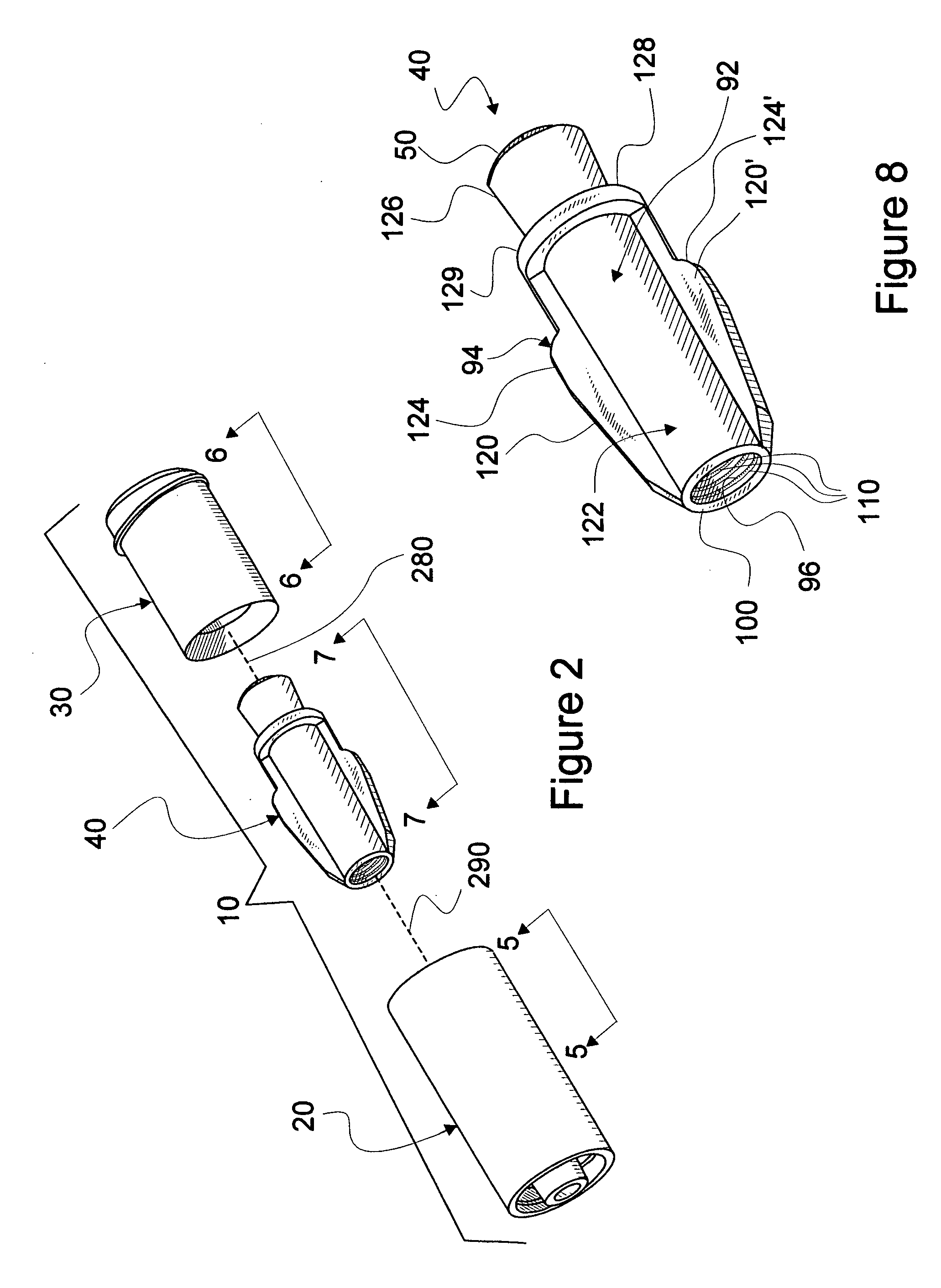Needle-free medical connector
a technology of medical connectors and needles, applied in the direction of valve arrangements, couplings, intravenous devices, etc., can solve the problem of lack of closed seals
- Summary
- Abstract
- Description
- Claims
- Application Information
AI Technical Summary
Benefits of technology
Problems solved by technology
Method used
Image
Examples
Embodiment Construction
[0049]In this description, the term proximal is used to indicate the segment of the device normally closest to the object of the sentence describing its position. The term distal refers to the other end. Reference is now made to the embodiments illustrated in FIGS. 1-12 wherein like numerals are used to designate like parts throughout. Primes of numbers refer to parts which are similar to parts having like numbers but are not identical with those parts in form or function.
[0050]As seen in FIG. 1, needle-free connector 10 according to the present invention is generally made from three parts, a line or catheter communicating section 20, a male luer accessible section 30 and a displaceable component 40 where a domed valve portion 50 is seen extending outward from section 30. Section 30 is securely affixed to section 20 by adhesion, ultrasonic welding or other joining method as is commonly practiced in the medical manufacturing industry to form a housing 52 for component 40. On an end 6...
PUM
 Login to View More
Login to View More Abstract
Description
Claims
Application Information
 Login to View More
Login to View More - R&D
- Intellectual Property
- Life Sciences
- Materials
- Tech Scout
- Unparalleled Data Quality
- Higher Quality Content
- 60% Fewer Hallucinations
Browse by: Latest US Patents, China's latest patents, Technical Efficacy Thesaurus, Application Domain, Technology Topic, Popular Technical Reports.
© 2025 PatSnap. All rights reserved.Legal|Privacy policy|Modern Slavery Act Transparency Statement|Sitemap|About US| Contact US: help@patsnap.com



